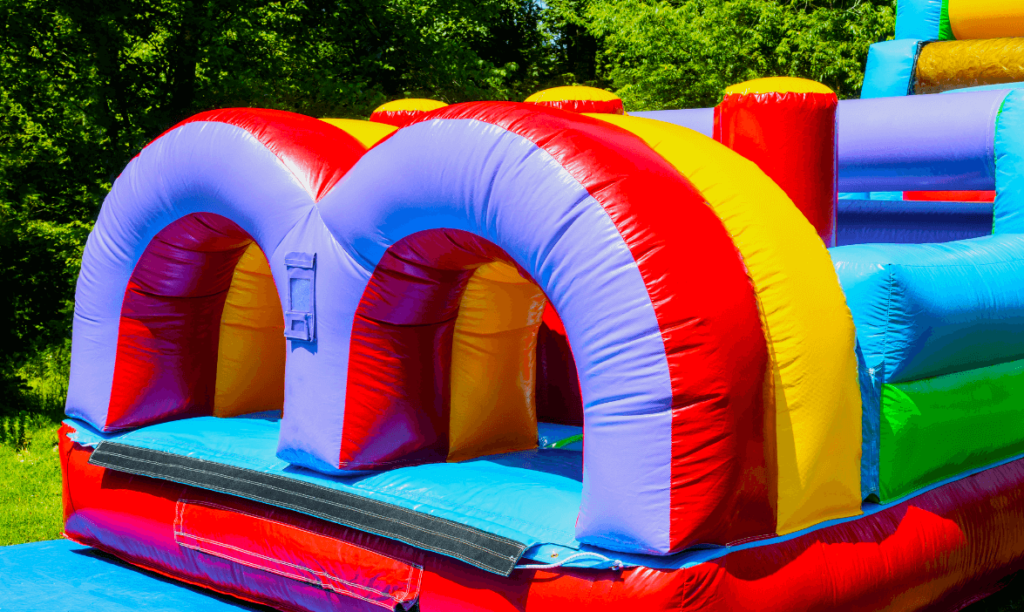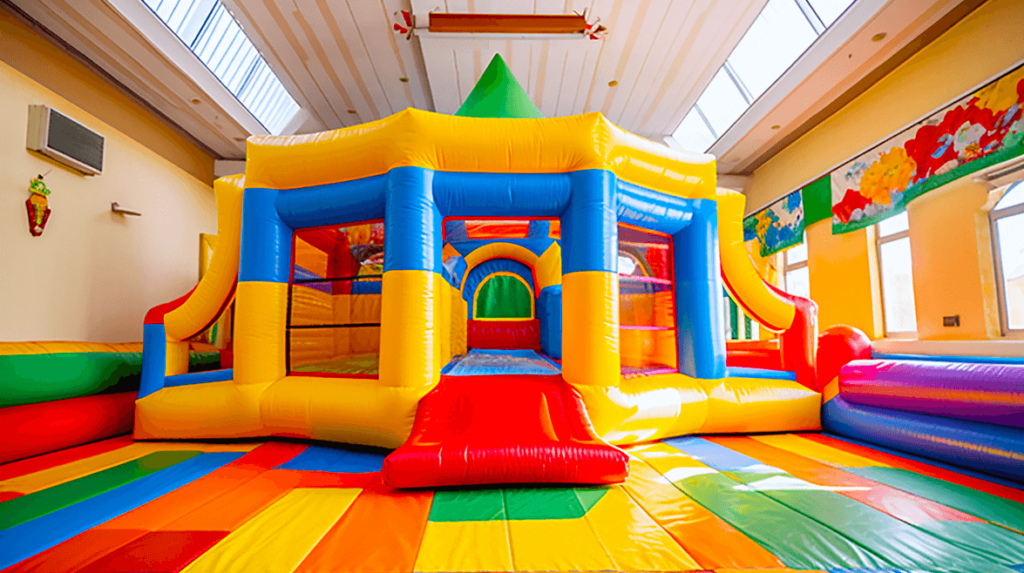Bouncing into Business: Navigating the Pros And Cons Of Owning A Bounce House Business
In a world filled with celebrations and festivities, the bounce house business has emerged as a sought-after venture. This article dives into the Pros And Cons Of Owning A Bounce House Business, providing an in-depth exploration of the advantages and challenges that come with owning a bounce house business.
Table of Contents

Pros of a Bounce House Business
Thriving Market Opportunities: The bounce house industry operates within a thriving market, offering entrepreneurs the potential for substantial profits. With the increasing popularity of bounce houses at events, there’s a constant demand that can translate into a lucrative business venture.
Flexibility and Creative Expression: Running a bounce house business allows for creative expression. Entrepreneurs can design unique themes and experiences for various events, offering a personalized touch that sets their business apart. The flexibility to adapt to different occasions adds an exciting dimension to the venture.
Low Initial Investment and Quick Returns: Compared to many other businesses, the bounce house industry boasts a relatively low initial investment. Entrepreneurs can acquire inflatable structures and start operations with minimal overhead costs, potentially leading to quicker returns on investment.
Community Engagement: Bounce houses create a sense of community engagement by providing a focal point for gatherings. Entrepreneurs can build relationships within their community, leading to repeat business and positive word-of-mouth referrals.
Health and Fitness Promotion: Bounce houses encourage physical activity, contributing to health and fitness promotion, especially for children. Parents appreciate the opportunity for their kids to engage in active play during events.
Year-Round Demand: The demand for bounce houses extends throughout the year, offering a consistent stream of business. While outdoor events are popular in the warmer months, indoor venues sustain the demand during colder seasons.
Partnership Opportunities: Entrepreneurs in the bounce house business can explore partnerships with event planners, catering services, and other related companies. Collaborative efforts can expand the range of services offered and attract a broader clientele.
Customization Options: Bounce houses can be customized to fit specific themes or branding for corporate events. This versatility allows entrepreneurs to tailor their services to a wide range of clients, from private parties to corporate functions.
Repeat Business Potential: Successful bounce house businesses often enjoy repeat business from satisfied customers. The joy and excitement generated at events can lead to customers becoming regular clients for various celebrations.
Social Media Visibility: Bounce houses are highly shareable on social media platforms. Attendees often capture and share moments from events featuring bounce houses, providing accessible and widespread visibility for the business.
Educational Opportunities: Bounce houses can be incorporated into educational events for children, fostering a playful learning environment. Entrepreneurs can collaborate with schools or educational institutions for interactive and educational experiences.
Diverse Customer Base: The appeal of bounce houses spans various age groups. While children are the primary participants, businesses can diversify by offering options for teenagers and adults, expanding their customer base.
Cons of a Bounce House Business
Maintenance Challenges: Operating bounce houses involves regular maintenance to ensure safety and longevity. Repairs, cleaning, and proper storage are essential tasks that, if neglected, can lead to increased expenses and downtime.
Weather Dependency: The bounce house business is often weather-dependent. Adverse weather conditions, such as strong winds or heavy rain, can disrupt planned events and impact the business’s revenue. Entrepreneurs must strategize to mitigate weather-related challenges.
Safety Concerns and Liability Issues: Ensuring the safety of participants is paramount in the bounce house business. Injuries can occur, leading to potential liability issues. Entrepreneurs must invest in quality equipment, implement safety guidelines, and secure adequate insurance coverage to address these concerns.
Regulatory Compliance: Bounce house businesses must navigate and adhere to various regulations and safety standards. Meeting these requirements involves time and effort, and failure to comply can result in legal consequences and reputational damage.
Transportation Logistics: The transportation of large inflatable structures poses logistical challenges. Entrepreneurs need to invest in suitable vehicles and equipment for safe and efficient transportation, adding to operational costs.
Seasonal Fluctuations: While the demand for bounce houses is consistent throughout the year, there may be seasonal fluctuations. Entrepreneurs may experience slower business during certain months, requiring strategic planning to manage cash flow.
Intense Competition: The bounce house industry can be highly competitive, with multiple businesses vying for the same clientele. Entrepreneurs must differentiate their services through creative marketing strategies and exceptional customer experiences.
Limited Target Audience: The primary target audience for bounce houses is children and families. This limits the potential market compared to businesses that cater to a broader demographic. Diversification of services may be necessary to expand the customer base.
Operational Time Constraints: Setting up and taking down bounce houses for events requires time and effort. Entrepreneurs may face operational constraints, especially when dealing with tight schedules and quick turnaround times between events.
Inflation and Deflation Challenges: Properly inflating and deflating bounce houses is a skill that requires training. Incorrect procedures can lead to operational issues, impacting the efficiency of services and potentially causing damage to the equipment.
Dependence on Disposable Income: The bounce house business relies on disposable income, making it susceptible to economic downturns. During financial uncertainties, individuals may cut back on non-essential services, affecting the demand for bounce house rentals.
Noise Complaints: Inflatable blowers used to keep bounce houses inflated can generate noise. This may lead to complaints from neighbors, primarily if events are held in residential areas, requiring entrepreneurs to address and mitigate noise concerns.
How to Set Up a Large Bounce House: Step-by-Step Guide

Selecting the Right Location: Begin by choosing a flat and even surface free from sharp objects or debris.
Unpacking and Inflation: Lay out the bounce house, connect the blower, and inflate the structure according to the manufacturer’s instructions.
Securing the Bounce House: Anchor the bounce house securely using stakes or sandbags to prevent movement during use. Conduct thorough safety checks, ensuring all seams, zippers, and anchor points are secure. Verify that the blower is functioning correctly.
Proper Ventilation: Ensure adequate ventilation inside the bounce house to prevent overheating, especially during warm weather. This can be achieved by leaving openings or using designs with mesh windows.
Weight Distribution: Distribute weight evenly inside the bounce house to avoid uneven stress on seams and potential structural issues. Encourage participants to bounce away from the entrance and exit areas.
Emergency Exit Awareness: Educate participants about the location of emergency exits. In case of any unforeseen circumstances, a clear exit path enhances safety for everyone inside the bounce house.
Supervision for Young Participants: Assign responsible individuals to supervise young participants, ensuring they follow safety guidelines and avoid engaging in activities that could lead to injuries.
Proper Deflation Procedures: When the event concludes, follow the manufacturer’s guidelines for deflating the bounce house safely. Ensure all participants have exited before beginning the deflation process.
Cleaning and Disinfection: After deflation, thoroughly clean and disinfect the bounce house using mild soap and water. Pay attention to areas with high contact, such as handles and entry points.
Storage Considerations: Store the bounce house in a dry and cool place. Fold it properly, avoiding creases that could weaken the material over time. Follow manufacturer recommendations for long-term storage.
Regular Equipment Inspections: Conduct regular inspections of the blower, seams, and any accessories. Address any issues promptly to maintain the bounce house in optimal condition for future use.
Community Guidelines Compliance: Familiarize yourself with local regulations and community guidelines related to bounce house setup. Adhering to these rules ensures a smooth operation without potential legal issues.
Insurance Coverage Review: Periodically review your insurance coverage to ensure it adequately protects your business against potential liabilities associated with bounce house operations.
Customer Instructions: Clearly communicate safety instructions to customers before the event, emphasizing guidelines for proper usage and behavior inside the bounce house.
What is the Best Material for a Bounce House?
Selecting the suitable material is crucial for durability and safety. PVC or vinyl coated with polyester is a common and sturdy choice, providing resistance to abrasions, punctures, and UV exposure.
How Much Room is Needed for a Bounce House?
The space required varies, but generally, a flat area measuring at least 15 feet by 15 feet for tiny bounce houses and larger dimensions for more prominent structures is recommended.
FAQ
Q: Are bounce houses suitable for all ages?
A: While bounce houses are generally designed for children, there are adult-sized options available for different events.
Q: How often should a bounce house be inspected for safety?
A: Regular inspections, ideally before each use, are crucial to ensuring the structural integrity and safety of the bounce house.
Bottom Line
In conclusion, the bounce house business presents entrepreneurs with exciting opportunities and challenges. Understanding the Pros And Cons Of Owning A Bounce House Business, coupled with diligent operational practices, can pave the way for a successful venture in this dynamic and entertaining industry. Whether navigating the creative aspects or addressing safety concerns, a well-informed approach is key to bouncing into business triumphantly.

